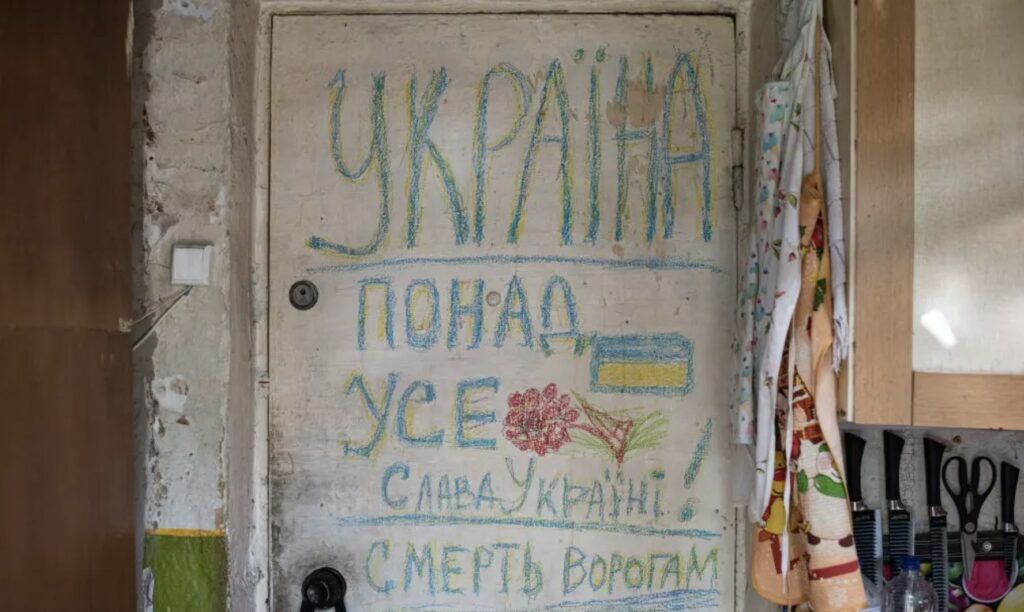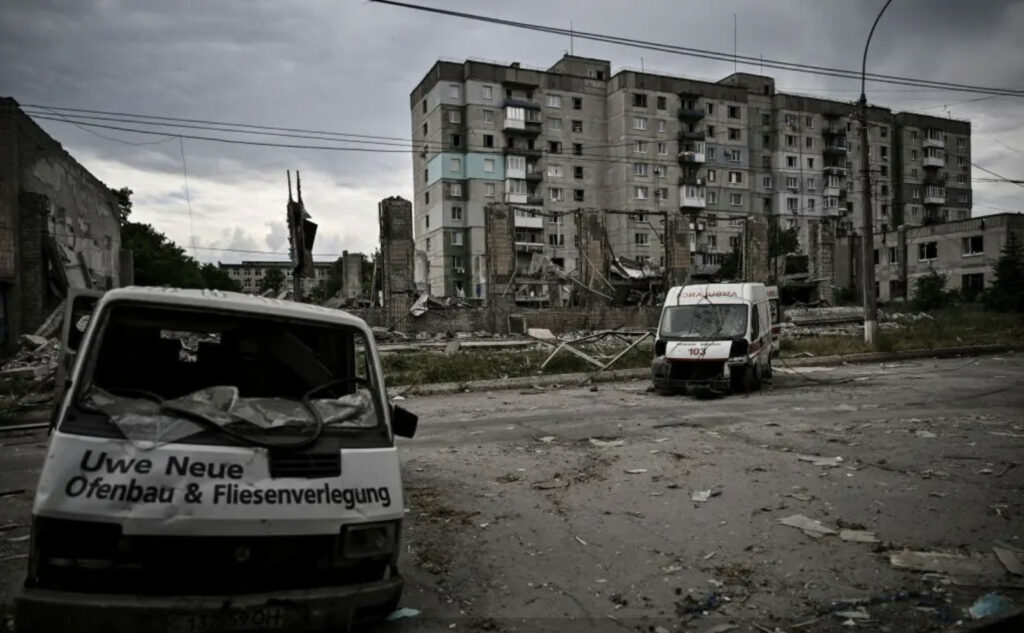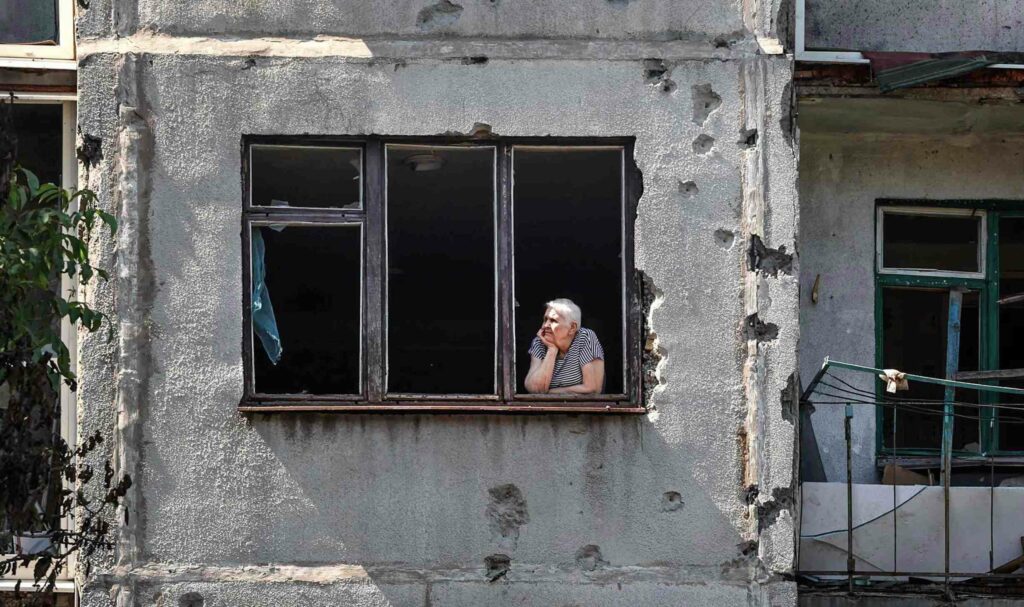The war bitterly hit the whole population of Ukraine. Many people lost their jobs and left their homes. According to the September survey of the sociological group Rating, only 61% of Ukrainians remained at their job positions, 36% of whom worked full-time1According to the survey, the IPDs, the women residing in Eastern regions, and the poorest of the East are most exposed to job loss. The survey is representative of the adult population of Ukraine. It does not include residents of temporarily occupied territories and residents of areas with no Ukrainian mobile communication at the time of the survey. Therefore, we can assume that the overall situation is even worse.. According to World Bank estimates, as of August 2022, about 817,000 residential buildings were damaged, 38% of which – were beyond repair. In other words, millions of Ukrainians ended up vulnerable.
The war put on verge of survival a significant part of people who belonged to the vulnerable, poorly protected categories of the population. In addition, some social infrastructure is damaged or destroyed2World Bank analysts estimated the damage caused to the infrastructure of Ukrainian social protection (boarding facilities, institutions providing social services to the population, etc.) at 164.4 million dollars. As of August, 56 such buildings were damaged or destroyed. In addition, 64 of more than 470 service centers of the Pension Fund suffered significant damage, as well as 19 of the 158 offices of the Social Insurance Fund., and the workload of institutions providing social services has increased tremendously due to the flow of displaced persons. The social protection system is also overloaded, especially against the background of the shortages in budget revenues. Therefore, systemic social support is not only a priority issue but is also, so to speak, under question.
In this article, I will define the trends observed in Ukrainian social policy in the pre-war years since they demonstrate the government’s vision of social support policy. Next, I will consider the existing state’s proposals in the field of social policy and analyze the politics behind such a vision. Finally, I will sketch the alternative approaches to post-war social policy and the reasons for the social policy being essential to the reconstruction.
Social protection during the war
The system of Ukrainian social protection was not ready for such a challenge as a full-scale invasion. In July, the recovery plan for the Ukrainian social protection sphere was presented in Lugano. Its authors attribute this situation to the obsolescence and “sovietness” of the Ukrainian social protection system: it is excessive and promises citizens benefits that the state cannot guarantee in practice.

Undoubtedly, every government puts the burden of the problems on its predecessor. However, why turn to such a distant past as the Soviet Union, having a thirty-year story of reductions in spending on the social sphere, privatization, and the decline of public social infrastructure? At the same time, it is obvious the authorities have no intention of departing from this course.
Since the beginning of the full-scale war, the government has announced and implemented several measures to stabilize the well-being of people. But many led to a reduction in labor rights and the rights of trade unions, limiting the possibility of receiving unemployment benefits. For example, the registered unemployed will be engaged in community service3Community service is defensive or serves to eliminate emergencies. with payment not lower than the minimum wage if they don’t get a job during 30 days. However, those who refuse to serve the community will lose the status of unemployed and benefit payments.
Moreover, the government announced the development of the Social Code aimed at “inventorizing information on the existing obligations for social payments of the state” and bringing them in line with the state’s financial capabilities. In addition, Law 2620 has liquidated the Social Insurance Fund. Pension Fund received its budget and part of the functions while its expenses and employees were significantly reduced. Therefore, the functioning of the social insurance system is a big issue.
A significant part of the measures taken by the government during the war and proposed in the draft recovery plan is not only and not so much justified by the challenges that the war itself brings. They are a continuation of the political course that has been here for a long time in the field of social policy (as well as in related areas, for instance, in health care). Such a political course has been called neoliberalism for several decades. However, let us not talk of the very ideology of neoliberalism. Instead, I suggest outlining the neoliberal traces in particular political programs.

An old enemy of neoliberalism
What is commonly known as the welfare state is an old enemy and target of neoliberalism. European social policies arose and thrived precisely in the post-war period. Although, in the 1970s, the oil crisis and economic recession made representatives of the neoliberal wing complain about “high” spending on social programs and support of the population slowing down the pace of economic growth.
The history of social policy in Ukraine has different origins than in the West. However, in the 1990s, we got on the train to a market economy. The economic recession of the first decade and full-scale privatization immediately led to reducing spending on the social sphere and the deterioration of social infrastructure, especially in rural areas. For example, the first two decades of independence brought a decrease in the number of kindergartens by almost two-thirds. At the same time, international donors and creditors encouraged the reduction of budget expenditures in the social sphere (or, as it was often formulated, “effective use of resources”). Globalization and the pursuit of investors also become a separate incentive for systematic attempts to limit labor rights and social guarantees, as well as to create more attractive tax conditions for businesses to retain capital.
From universalism to supporting the poorest
What does the neoliberal course look like in the Ukrainian social sphere? On the one hand, it is based on intentions to reduce the spending on social protection; on the other hand, to change the very nature of the social policy.
How does the reduction of spending work? To obtain a benefit, you must demonstrate that you need assistance, that is, verify your income. However, the income threshold is very low.
For instance, let us consider the conditions for identifying a family as low-income so that it can receive assistance. As of November 2022, to get financial aid, a family of two adults and one child under the age of 6 must declare that their average monthly total income for the last 6 months is less than UAH 29,474 (about UAH 4,912 per month)4It is the right of the families whose average monthly total income over the last 6 months is lower than the subsistence minimum. In 2022, this minimum accounts for 45% of the subsistence minimum established for this category; for persons who have lost working capacity and persons with disabilities –100%; for children – up to 130%. For example, as of July, for an able-bodied person, the subsistence minimum level is UAH 1,170 per month or EUR 29 (45% of UAH 2,481); for children under the age of 6 – UAH 2,861 or EUR 71.. Moreover, not only does income affect the decision to aid, but also other factors. For example, the reply may be negative if one or both adults have not worked, studied full-time, or been employed for the past three months. In addition, control measures are very strict so that those who are not entitled to assistance do not receive it.

Also, reductions in existing social programs take place. As I already mentioned, the government intends to modify the existing social obligations of the state to reduce everything that allegedly “does not correspond to financial possibilities.” In addition, they announced the “transformation of the extensive system of social payments into universal social assistance,” which will be targeted at the poorest. Such a social protection course no longer provides, for example, financial aid to all single mothers. Instead, only those passing an income test – the poorest – will get this aid. Therefore, in fact, citizens are gradually deprived of any universal rights to support.
In terms of changes in the very nature of the social policy, we can see attempts to replace the entities that provide social services and their financing scheme. Thus, the 2019 reform aims to create a market of social services, with private service-providing institutions contesting state and communal ones. However, the state must finance the services provided at the expense of the state, not the institution. Therefore, it follows the logic of medical reform, where the money comes with a patient, and hospitals transform into enterprises earning money to exist.
The same proposals we may find in the field of pension provision. Draft reconstruction plan and the specialized committee of the Verkhovna Rada called pension reform an “objective necessity,” not hurrying to implement it before the war. It is about abandoning the solidarity pension system in favor of a mixed one by introducing individual pension plans and partially privatizing the pension provision.
To sum up, apart from the reduction of funding, everything turns into a source of profit.
In addition, while there are supposedly no financial sources to support the social security system, nobody mentions increasing the taxation of business profits, large corporations, and enterprises, introducing a more progressive tax rate. On the contrary, in times of war, the state makes concessions to businesses, in particular in the field of taxes. At the same time, the tax burden on employees does not change. That is, the social reproduction of the labor force that businesses use increasingly relies on the labor force itself.

Solidarity or atomization?
Why is such a course dangerous? In most states with a developed social policy, part of the support programs varies depending on the recipient’s income level. However, the question is what amount of public goods (or, as we say – services) is available to all citizens as a universal right, regardless of their income. For example, in terms of ensuring guaranteed free access to kindergartens, schooling and health services, child benefit payments, etc.
The less universal the various government assistance programs are, the closer they are to supporting only the poorest and the less support they usually have among the taxpayers. For example, if only the poorest are entitled to assistance, the average person may feel hopeless in receiving aid, even though their situation may be difficult. So, why pay social security contributions for something you can’t count on? People are less willing to invest in something they most likely will not get any benefit from. Thus, in the future, social protection expenditures will naturally decline even more. It means that the number of active support programs will also decrease.
In addition, such an approach stigmatizes the recipients, as they seem to disconnect from the rest of society. Being under maximum pressure to enter the labor market as soon as possible also may encourage the recipients to agree on any job under any conditions. It further deepens their insecurity – this time, in the workplace. People who cannot enter the labor market for various reasons are considered pests and dependents since the rest of the taxpayers do not receive anything from the state but anyway have to support them.
Due to the gradual reduction of state funding, the quality of the public goods provided by communal and state facilities may decline. Therefore, wealthier people are less inclined to use their services, preferring the private ones: schools, medical facilities, care facilities, etc. Public service providers and their clients are even more stigmatized. Finally, support for spending on the welfare state is decreasing: after all, why finance something that “we” do not use and that is of lower quality?

From a political perspective, the structural, tectonic changes in political consciousness are dangerous. I mean the individualization of social risks due to the limitation of the range of recipients. Individual pension plans, where a person’s well-being essentially depends on the success of their investments in the stock market, are an illustrative model of this trend. As a result, a person associates themselves with business, an investor, rather than with fellow citizens. It undermines the feeling of intergenerational support and leads to the individualization of social consciousness when everyone is on their own, and the state will help only in the worst case.
Is this the kind of society we aspire to, especially after the war? Why should we move toward greater individualization and atomization while experiencing unprecedented unity?
Social policy of a solidarity society
The war influenced everyone, but some suffered disproportionately greater losses, for instance, people who were already in a tough situation. For them, problems have only intensified and overlapped. So how to overcome this situation and develop united and solidarity society?
It would be fair to demand higher income taxation and redistribution of income to implement generous social policies and universal social protection programs. There is no other effective way of supporting those who have lost their homes and jobs. We must not only stand in solidarity in the face of the enemy’s army, but also internally, among ourselves. Otherwise, our collective strength will be exhausted, as everyone will focus on their own survival.
It is not only about political visions of what our society can be. There are also pragmatic considerations behind this. Equal societies with generous social policies, where everyone agrees to contribute to the common good and gets benefits afterward, are happier, healthier, and more stable. After the war, we must not allow internal political instability, as economic, survival, and dignified life issues can deepen social divisions. It also applies to the reintegration of the currently occupied territories and, above all, to the territories occupied since 2014. A generous and universal social policy can become one of the instruments for the social consolidation and reintegration of those living in uncontrolled areas for years.
Social policy as a system of support for the poorest cannot face the challenges of war and post-war reconstruction without leading to increased inequality and atomization of society. We need a universal and solidarity social policy covering every group and providing minimum decent living standards for everyone. Such a system can help people feel included in a network of social solidarity they can count on.
Originally published on Commons
Support Cedos
During the war in Ukraine, we collect and analyse data on its impact on Ukrainian society, especially housing, education, social protection, and migration










